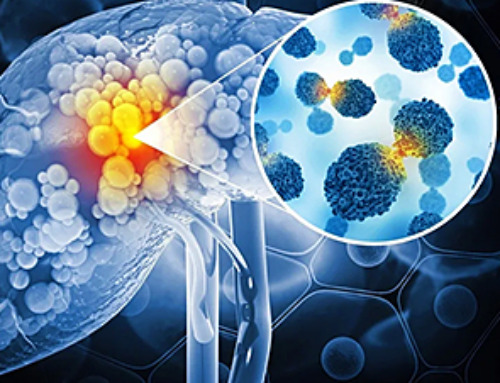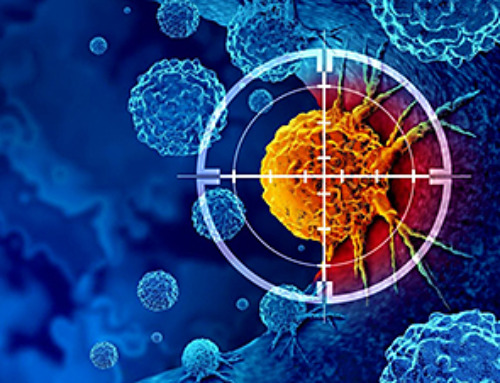Scientists worldwide have joined forces to build the first-ever roadmap for conserving Earth's vast invisible majority—microbes.
Their new IUCN Specialist Group reframes conservation by elevating microbial life to the same urgency as plants and animals, emphasizing microbes' foundational role in climate stability, soil fertility, marine ecosystems, and human health. The roadmap charts new metrics, policies, and restoration tools that make unseen biodiversity visible in global conservation systems for the first time.
Global Effort to Shape Microbial Conservation
A newly published study describes how researchers collaborated to develop the first roadmap dedicated to microbial conservation, guided by Applied Microbiology International President Professor Jack Gilbert.
The paper, titled 'Safeguarding Microbial Biodiversity: Microbial Conservation Specialist Group (MCSG) within the Species Survival Commission of the International Union for Conservation of Nature (IUCN)', appears today (November 20) in Sustainable Microbiology, an AMI journal.
In July 2025, the IUCN officially established the MCSG within its Species Survival Commission, with Professor Gilbert and Raquel Peixoto (KAUST / ISME) serving as co-chairs. The group emerged after a May workshop led by Professor Gilbert that brought together conservation specialists and microbiologists to explore how conservation principles apply in a world shaped by microbial life.
A Paradigm Shift Toward Planetary Health
"This is the first global coalition dedicated to safeguarding microbial biodiversity, which is the 'invisible 99% of life', to ensure that microbes are recognized as essential to the planet's ecological, climate, and health systems," Professor Gilbert said.
"I think this reframes conservation from saving individual species to preserving the networks of invisible life that make visible life possible—a paradigm shift toward planetary health. It also gives us a really good look into the microbial tools that can support conservation action – so that we may use microbiology to solve the world's biggest problems."
Why Microbial Biodiversity Cannot Be Ignored
Microbes play central roles in soil fertility, carbon regulation, marine productivity, and organismal health, yet they have rarely been included in mainstream conservation efforts. Overlooking microbial diversity weakens climate resilience, food security, and the recovery of ecosystems.
Professor Gilbert explained that "The MCSG fills this gap by embedding microbiology directly into IUCN's conservation machinery, i.e. using Red List criteria, ecosystem assessments, and restoration programs, to make microbes visible in policy, not just in science."
Five Core Functions of Microbial Conservation
During the past two years, the founding group has established an international network of microbiologists, ecologists, legal experts, and Indigenous knowledge holders from more than 30 countries. Working together, they created the first microbial conservation roadmap, outlining five core components of the IUCN Species Conservation Cycle:
- Assessment – develop Red List-compatible metrics for microbial communities and biobanks.
- Planning – create ethical and economic frameworks for microbial interventions.
- Action – pilot restoration projects using microbial solutions (coral probiotics, soil carbon microbiomes, pathogen-resistant wildlife).
- Networking – connect scientists, culture collections, and Indigenous custodians worldwide.
- Communication & Policy – launch campaigns such as "Invisible but Indispensable" to engage policymakers and the public.
Funding from the Gordon & Betty Moore Foundation and in kind support from AMI and ISME supports the first phase of mapping microbial hotspots, developing conservation indices, and linking existing microbial biobanks into a global archive.
Conceptual and Technical Hurdles in Protecting Microbes
Creating a conservation framework for life forms that are microscopic posed conceptual and technical hurdles, Professor Gilbert said.
These included:
- Defining what constitutes a "microbial species" in Red List terms.
- Integrating genomic and ecological data into policy tools built for plants and animals.
- Overcoming the perception that microbes are too complex or resilient to need protection.
"Microbial conservation must contend with enormous unseen diversity and highly dynamic community structures that defy classical species concepts. Taxonomic instability, lack of long-term baselines, and the ethical handling of microbial samples (including Indigenous or human-associated microbiota) all require new definitions of 'loss', 'restoration', and 'rights of microbes'," Professor Gilbert said.
"But a major landmark came when the IUCN approved the MCSG as a formal Specialist Group—officially extending global conservation to microbes for the first time."
Future Plans: Red Lists, Hotspots, and New Interventions
The group now plans to:
- Produce the first Microbial Red List framework by 2027.
- Publish global microbial hotspot maps integrating soil, marine, and host-associated ecosystems.
- Pilot conservation interventions (e.g., microbial bioremediation, coral-reef probiotics, soil carbon restoration).
- Ensure microbial indicators appear alongside plants and animals in IUCN and UN biodiversity targets by 2030
Long-term progress will require steady financial support to grow global networks that track microbial activity. It also depends on ensuring that microbes are included in national biodiversity and climate initiatives, including "30 by 30" and One Health policies. Another key need is greater public understanding of microbial roles, with "public microbial literacy—recognizing microbes as the foundation of ecosystem and human health." In addition, researchers highlight the importance of using digital-twin and AI technologies to anticipate how microbial communities will react to environmental change.
Reference: "Safeguarding microbial biodiversity: microbial conservation specialist group within the species survival commission of the International Union for Conservation of Nature" by Jack A Gilbert, Amber Hartman Scholz, Maria Gloria Dominguez Bello, Lise Korsten, Gabriele Berg, Brajesh K Singh, Antje Boetius, Fengping Wang, Chris Greening, Kelly Wrighton, Seth R Bordenstein, Janet Jansson, Jay T Lennon, Valeria Souza, Sarah M Allard, Torsten Thomas, Don Cowan, Thomas W Crowther, Nguyen Nguyen, Lucy Harper, Louis-Patrick Haraoui, Suzanne L Ishaq, Margaret McFall-Ngai, Kent H Redford and Raquel Peixoto, 20 November 2025, Sustainable Microbiology.
DOI: 10.1093/sumbio/qvaf024
News
The Stunning New Push to Protect the Invisible 99% of Life
Scientists worldwide have joined forces to build the first-ever roadmap for conserving Earth’s vast invisible majority—microbes. Their new IUCN Specialist Group reframes conservation by elevating microbial life to the same urgency as plants and [...]
Scientists Find a Way to Help the Brain Clear Alzheimer’s Plaques Naturally
Scientists have discovered that the brain may have a built-in way to fight Alzheimer’s. By activating a protein called Sox9, researchers were able to switch on star-shaped brain cells known as astrocytes and turn them into [...]
Vision can be rebooted in adults with amblyopia, study suggests
Temporarily anesthetizing the retina briefly reverts the activity of the visual system to that observed in early development and enables growth of responses to the amblyopic eye, new research shows. In the common vision [...]
Ultrasound-activated Nanoparticles Kill Liver Cancer and Activate Immune System
A new ultrasound-guided nanotherapy wipes out liver tumors while training the immune system to keep them from coming back. The study, published in Nano Today, introduces a biodegradable nanoparticle system that combines sonodynamic therapy and cell [...]
Magnetic nanoparticles that successfully navigate complex blood vessels may be ready for clinical trials
Every year, 12 million people worldwide suffer a stroke; many die or are permanently impaired. Currently, drugs are administered to dissolve the thrombus that blocks the blood vessel. These drugs spread throughout the entire [...]
Reviving Exhausted T Cells Sparks Powerful Cancer Tumor Elimination
Scientists have discovered how tumors secretly drain the energy from T cells—the immune system’s main cancer fighters—and how blocking that process can bring them back to life. The team found that cancer cells use [...]
Very low LDL-cholesterol correlates to fewer heart problems after stroke
Brigham and Women's Hospital's TIMI Study Group reports that in patients with prior ischemic stroke, very low achieved LDL-cholesterol correlated with fewer major adverse cardiovascular events and fewer recurrent strokes, without an apparent increase [...]
“Great Unified Microscope” Reveals Hidden Micro and Nano Worlds Inside Living Cells
University of Tokyo researchers have created a powerful new microscope that captures both forward- and back-scattered light at once, letting scientists see everything from large cell structures to tiny nanoscale particles in a single shot. Researchers [...]
Breakthrough Alzheimer’s Drug Has a Hidden Problem
Researchers in Japan found that although the Alzheimer’s drug lecanemab successfully removes amyloid plaques from the brain, it does not restore the brain’s waste-clearing system within the first few months of treatment. The study suggests that [...]
Concerning New Research Reveals Colon Cancer Is Skyrocketing in Adults Under 50
Colorectal cancer is striking younger adults at alarming rates, driven by lifestyle and genetic factors. Colorectal cancer (CRC) develops when abnormal cells grow uncontrollably in the colon or rectum, forming tumors that can eventually [...]
Scientists Discover a Natural, Non-Addictive Way To Block Pain That Could Replace Opioids
Scientists have discovered that the body can naturally dull pain through its own localized “benzodiazepine-like” peptides. A groundbreaking study led by a University of Leeds scientist has unveiled new insights into how the body manages pain, [...]
GLP-1 Drugs Like Ozempic Work, but New Research Reveals a Major Catch
Three new Cochrane reviews find evidence that GLP-1 drugs lead to clinically meaningful weight loss, though industry-funded studies raise concerns. Three new reviews from Cochrane have found that GLP-1 medications can lead to significant [...]
How a Palm-Sized Laser Could Change Medicine and Manufacturing
Researchers have developed an innovative and versatile system designed for a new generation of short-pulse lasers. Lasers that produce extremely short bursts of light are known for their remarkable precision, making them indispensable tools [...]
New nanoparticles stimulate the immune system to attack ovarian tumors
Cancer immunotherapy, which uses drugs that stimulate the body’s immune cells to attack tumors, is a promising approach to treating many types of cancer. However, it doesn’t work well for some tumors, including ovarian [...]
New Drug Kills Cancer 20,000x More Effectively With No Detectable Side Effects
By restructuring a common chemotherapy drug, scientists increased its potency by 20,000 times. In a significant step forward for cancer therapy, researchers at Northwestern University have redesigned the molecular structure of a well-known chemotherapy drug, greatly [...]
Lipid nanoparticles discovered that can deliver mRNA directly into heart muscle cells
Cardiovascular disease continues to be the leading cause of death worldwide. But advances in heart-failure therapeutics have stalled, largely due to the difficulty of delivering treatments at the cellular level. Now, a UC Berkeley-led [...]




















